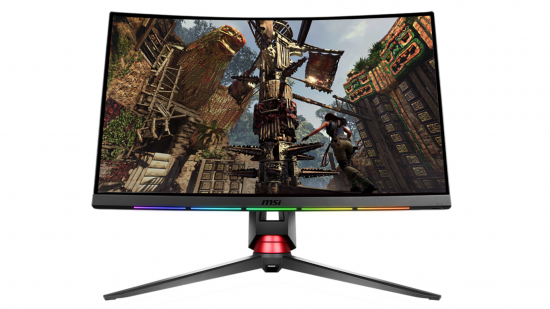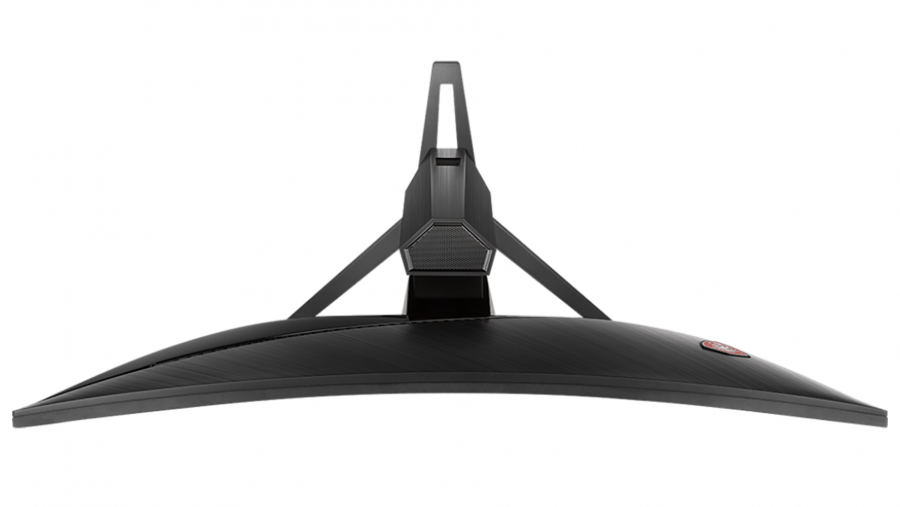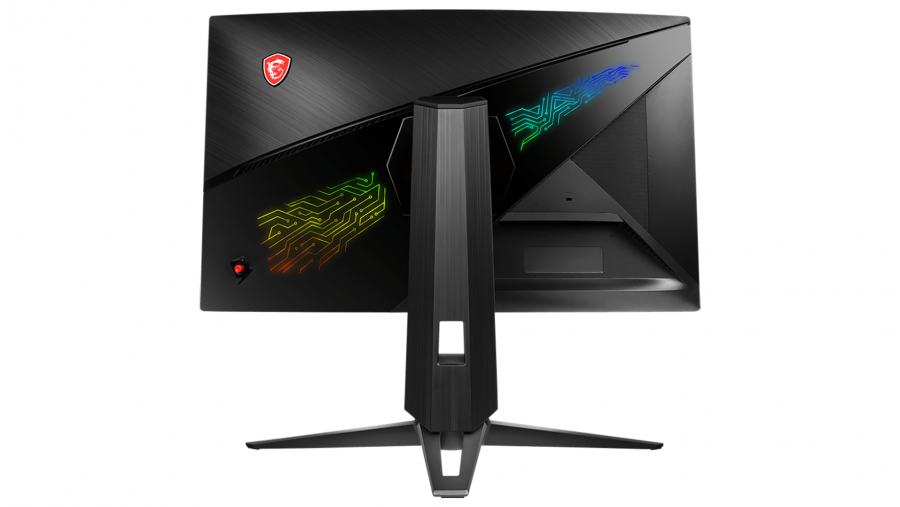Our Verdict
MSI has put together a solid 1440p monitor with fantastic viewing angles, but the Optix MPG27CQ’s lack of contrast, high cost, and rather limited in-game integrations hold it back from being a must-buy.
MSI first announced its Optix MPG27CQ monitor back at CES in January, but now we’ve got it in the flesh, and on the testbench, for a round of testing. This curved 1440p VA monitor touts a 144Hz refresh rate, front and rear RGB lighting with SteelSeries’ GameSense app, Freesync support, and top viewing angles. That’s all great on paper, but does the real thing live up to the hype?
The Optix’s style is unequivocally MSI gamer fashion. That means it’s black and red and very angular. The stand is an exceptionally sturdy and heavy-duty tripod style that offers the full breadth of swivel, height, and tilt adjustments for most setups. In fact, this monitor is especially useful for off-angles and obscured setups thanks to the incredibly wide viewing angle. Alongside the minimal bezel and slight 1800R curve, it’s a strong contender for multi-monitor setups.
The panel is true to colour no matter which way you look at it. But, sadly, that’s where the love affair ends. Aside from the wide viewing angles, which really are some of the best around, the panel’s performance isn’t much to write home about. The colour is good, but the entire screen is let down by poor white saturation and even worse black levels.
Shades of deep grey are mostly lost to the depths of pitch black, and, unfortunately, that means that it tends miss out on some of the finer details in dark and dingy games. You might have to push the brightness up in-game on occasion to compensate. White saturation too is not great, with the brightest whites tending to lack differentiation. It’s a little odd for a VA to fall over on the contrast, and the black levels can be rectified at the expense of blowing out white saturation, but, overall, the Optix trips at this hurdle.
|
MSI Optix MPG27CQ
|
|
| Size | 27-inch |
| Resolution | 2560 x 1440 |
| Refresh rate | 144Hz |
| Response time | 1ms (MPRT) |
| Panel type | VA |
| Brightness | 400nits |
| Curvature | 1800R |
| Contrast ratio | 3000:1 |
| Connectivity |
1x DisplayPort 1.2, 1x HDMI 2.0, 2x USB 3.1 Type-A, 1x USB 3.1 Type B, 1x headphone jack, 1x microphone jack, 1x headphone/mic jack
|
| Vesa mount |
100mm x 100mm
|
| Price | $450 (£480) |
Aside from the contrast issues, the Optix is an otherwise very capable gaming monitor. The 144Hz refresh rate is enough to keep most gamers content for a good half decade, the 1ms response rate keeps it feeling fresh and speedy, and Freesync can be a pretty useful tool if you favour a Radeon graphics card (or you want to faff around and trick Nvidia’s drivers with an APU). But these features do little to separate the Optix from the competition.
The feature that MSI has implemented to try and help the Optix stand among the best is front and rear Mystic Light RGB lighting zones. There’s five lighting zones on the front, and two on the rear of the unit that shine out from beneath a circuit design. The front RGB zones are pretty tame and on enough of a downward angle as to not blind you with RGB, and, as a result, are quite easy to forget about while you’re engaged in a game.
The zones are controlled through MSI’s Mystic Light software, but if you want a little more feedback from your games, the Optix is compatible with the Steelseries GameSense software, too. This app (which is far better than MSI’s own Mystic Light software) integrates with certain games and offers reactive lighting based on in-game prompts. But there’s a problem: there are only a handful of supported games.
Luckily, two of those titles are some of the biggest games in the world: CS:GO and Dota 2, but still, a little more variety would be great to make this feature worthwhile. It is easy to forget about this bar in the thick of an Overwatch match, making that game integration almost a moot point. While you can tweak custom lighting profiles for other games, the lighting is best left as an aesthetic feature rather than a practical one.
The GamingOSD app, however, is actually a rather good use of software integration. While it’s decisively MSI software – that means text is excessively huge and it’s less than immediately intuitive – changing brightness, contrast, picture-in-picture, or profiles on the fly for different media is actually pretty handy functionality to have on the desktop.
At $450 (£480), the Optix MPG27CQ is also a rather expensive monitor within the 1440p 144Hz segment. While well-built and offering some unique functionality, the monitor’s features aren’t groundbreaking enough to justify a mediocre panel choice. The colour reproduction is good, and viewing angles superb, but I expect a VA panel to perform much better when it comes to contrast.


